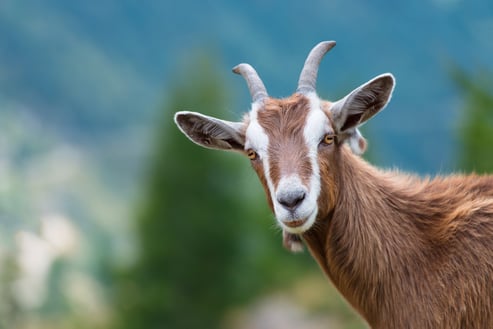Sheep and goat nutrition
TERRITORY\

SHEEP AND GOAT NUTRITION
Sheep and goats are, together with cattle, the most extensively farmed species in the world. Their economic relevance and territorial distribution are mainly attributable to their remarkable adaptability to different pedoclimatic environments, their ruggedness as well as their ability to rely on low nutritional value fodder as a food source, in addition to their mild temperament and modest size.
Sheep are among the oldest domesticated animals. Since roughly 8000 B.C., they have provided humans with milk, meat, and wool. Their domestication, as evidenced by fossil finds in the Middle Eastern area, likely occurred during that period in Tibet, Iran, and Iraq. From there, these species gradually spread throughout the world.
In Italy, sheep and goat breeding has diversified throughout the centuries as a result of environmental conditions and the features of our region. The breeding systems of these species can essentially be traced back to the sedentary and transhumant systems.
Breeding goats and sheep in barn or pasture
The sedentary system is the most widespread form in central and southern Italy. In contrast, the transhumant system historically constitutes the most prevalent form of farming in south and insular Italy and is also popular in the Alpine arc areas.
Sheep and goats, for about 6 to 7 months, from October to May, live in the plains, then move between May and June by transhumance to mountain pastures where they stay until September. This farming system is heavily based on using natural pasture as the primary source of food intake, in which the shepherd follows with their herd the availability of green grass as seasons change.
Specialized breeds of sheep and goats and their growth
Over the past few decades, however, as highly specialized dairy breeds - mainly from foreign countries, such as Lacaune and Assaf in the case of sheep and Saanen for goats, characterized by having higher nutritional requirements - have become more common in our country as well, the intensive barn breeding system has also been expanding for these species. Compared to more traditional breeding systems, this system requires the application of specific management practices that are more akin to intensive dairy cow breeding.
These intensive forms of livestock farming involve feeding the lamb or kid with reconstituted milk and starter feeds for weaning after the colostral period. Conversely, traditional transhumance-based systems involve weaning lambs over a longer period, and the animals benefit from maternal nursing for longer.
Ovicaprid reproduction
Regarding reproductive management, to maximize profit by planning deliveries and have constant milk production throughout the year, modern forms of breeding also use heat synchronization, superovulation, and instrumental insemination techniques.
On the other hand, the traditional method of reproductive management involved placing males in the herd in two periods: spring to yield births around Christmas and autumn to get deliveries around Easter time.
Ovicaprid feeding
As far as aspects of feed management are concerned, the unifeed system for the supply of a single complete and balanced daily feed ration, calculated according to the nutritional requirements for the different developmental stages of the livestock, is also gaining popularity for these species.
Among all the nutrients these species need, a crucial role is played by so-called structural carbohydrates, consisting of the fibrous fractions found in forages. Sheep and goats belong to the ruminant suborder and get a significant amount of metabolizable energy, specifically from ruminal fiber fermentations and a considerable supply of microbial protein from ruminal bacterial biomass.
Microbial protein and the volatile fatty acids resulting from ruminal fermentations are the two primary and most important sources of nutrition for these small ruminants.
It is thus clear that the main objective in the nutritional farming of sheep and goats is to ensure constant and balanced nutrition over time, with the finest quality fibrous sources that provide the highest bacterial growth rate to obtain as much bacterial Metabolizable protein as possible, and more AGV as an energy source.